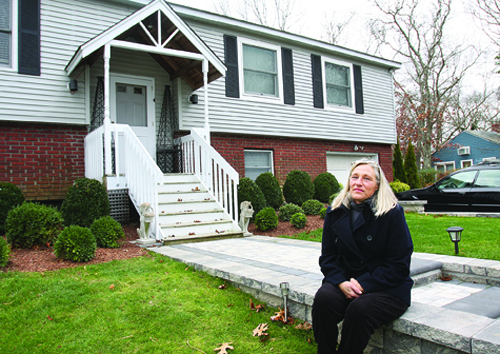No big tax swings in 2013 for Riverhead School District taxpayers

Property tax bills are going out and, unlike years past, there will be no huge tax increase for any part of the Riverhead school district.
The district covers parts of three towns — Riverhead, Southampton and Brookhaven — and the overall school tax levy is divvied up using a state formula called the equalization rate. From 2008 to 2010, people in the Southampton Town section of the district, which includes Flanders, Riverside, Northampton and Red Creek, saw tax increases of 22 percent, 14.6 percent and 14. 5 percent.
Those in the Riverhead Town portion saw a tax decrease one year and increases of 1.16 and 2.67 percent in the other two years during the same period.
Last year, taxes increased by 5.5 percent for Riverhead residents and by 4.89 percent for those in Southampton. In the bills going out this week, taxes in Riverhead Town part of the district will increase by 2.5 percent, while the Southampton Town side will see an increase of only 1.2 percent.
The Brookhaven portion of the district, which is very small, will see taxes increase by 2 percent.
Riverhead Town assessor Lavern Tennenberg said these increases are due to a combination of tax base fluctuations and equalization rate shifts. This year, she said, Southampton Town’s tax base shrank, while Riverhead’s grew slightly. Southampton Town has reassessed its properties and updated those assessments as well, and the state has given them a 100 percent equalization rate, meaning their assessments are deemed to be at 100 percent of market value. Riverhead and Brookhaven towns, which haven’t reassessed in years, have 15 percent and .91 percent equalization rates, respectively.
“These tax rate fluctuations will continue until everybody is at 100 percent,” Ms. Tennenberg said.
Riverhead Town Board members have consistently refused to reassess over the years, calling it political suicide. State Assemblyman Fred Thiele (I-Sag Harbor) filed a bill last year to try to deal with the wide tax shifts in the Riverhead School District. The bill proposed to base taxes for the Riverhead district on a five-year average of school tax apportionments in the three towns, rather than on one year, as is done now.
“The bill would try to smooth out the bumps,” he said, adding that without the measure, the tax spikes are likely to re-emerge at some point in the future. “I did a chart and looked at 20 years and, some years, Southampton gets the big hit and, other years, Riverhead does,” Mr. Thiele said. “Over a long period of time, they average out but to the taxpayers who have to pay the big increases, it’s still a problem.”
Mr. Thiele’s bill stalled in the Assembly’s ways and means committee, however, he said he plans to reintroduce it in January.
He said the state’s 2 percent tax cap also will also help keep taxes down in the coming years, although that is based on tax levy increases, rather than tax rate increases. Overall, the total of all property taxes being collected in Riverhead Town this month is up by 1.44 percent, a figure that includes town, school, county, fire district and other taxes. Riverhead’s townwide tax rate (general fund, highway and street lighting) is up by 2.8 percent and the county tax rate in the town is down.
One tax that will be going down for Riverhead Town residents is for the refuse and garbage district, which is paid on a flat-fee basis rather than through a tax rate. Those fees will drop from $356 to $270 for the year for a single-family residence; from $534 to $405 for a two-family home; from $712 to $540 for three-family homes; and from $890 to $675 for multi-family structures.
Taxes in both towns are payable in two segments, with the first half due by Jan. 10 and the second due by May 31.








